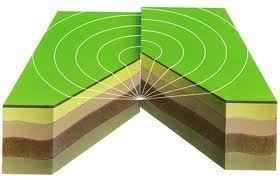What Are Seismic Waves?
Seismic waves are shock waves that occur underneath or through the Earth’s surface. Volcanic eruptions, explosions, wind, or strong ocean waves generate them. Depending on the nature and strength of the seismic wave, it can significantly damage the Earth’s surface or generate tsunami waves that can wreak havoc on the coastline.
Who Studies Seismic Waves?
The study of seismic waves is called seismology. It deals with the analysis and monitoring of seismic waves and earthquakes, and the results of these events. The scientists who undertake these studies are called seismologists. In the seismology field, the Earth’s geological composition and various structures are studied in order to evaluate the potential dangers that earthquakes or other natural phenomena pose and how to best mitigate them. Seismic waves are typically categorized into either body or surface waves in these courses of study.
Types of Body Waves
A body wave is a seismic wave that moves through the inner parts of the Earth. It bends and shortens depending on the type of material it passes through. The “P-wave” is a body wave that is normally recorded at the start of an earthquake. It moves through both liquids and solids by compressing or expanding the material standing in its path. An S-wave is a slow seismic wave that pushes rock particles perpendicular to the path of the wave. However, it cannot pass through fluids or gas. Since the outer layer of the planet’s core is made of molten lava, the S-wave has to bend and move around the lava in order to reach the site of the earthquake.
What is a Surface Wave?
Surface waves are normally associated with most of the damage that an earthquake does. They only move through the planet’s crust and act very similar to an ocean wave. A surface wave is created when an earthquake’s source is near the Earth’s surface. Surface waves are divided into Rayleigh waves, which travel in a path similar to ripples in a lake, and Love waves, which split the ground horizontally when they move. Surface waves are known to shake and bring down heavy structures.
How do Scientists Measure Earthquakes?
A seismologist’s primary earthquake measurement method is to determine the arrival time difference between the primary and secondary waves to assess an earthquake’s source and distance. A seismologist uses a seismograph to gather this information, then stores the data on a computer to help predict future earthquakes.


Comments - 5 Responses to “What Are Seismic Waves?”
Sorry but comments are closed at this time.